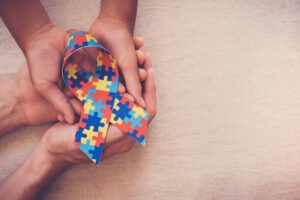
What is Complex Post Traumatic Stress Disorder (CPTSD)?

Complex Post Traumatic Stress Disorder
Complex Post Traumatic Stress Disorder (CPTSD) is a result of prolonged stress. The stressors to which the person is exposed are repetitive and prolonged, may occur at critical periods in development (when the person is most vulnerable), and will involve some form of neglect, abandonment or harm.
CPTSD may be seen in survivors of community violence (e.g., bullying, gang wars), torture, war, genocide, ongoing child abuse (whether sexual or physical), and other horrifying or life-threatening conditions. Adversities faced by individuals, communities and ethnocultural minority groups (e.g., transgenders, blacks, women) may lead to or deepen the impact of complex trauma.
According to Judith Herman, who first used this term in the early nineties, our conceptualization and understanding of this disorder is still evolving, as is its differentiation from Post Traumatic Stress Disorder (PTSD). In fact, in contrast to the ICD-11 classification system favored in Europe, the American psychiatric diagnostic system, in its current version, known as DSM-V, does not list it as such. Some researchers proposed placing it under Disorders of Extreme Stress, Not Otherwise Specified (DESNOS).
CPTSD may be understood as either early developmental trauma or a combination of early trauma with an additional shock trauma. In the latter scenario, the developmental trauma becomes associated or coupled with the shock trauma, which may occur later, even in adulthood. Since the developmental trauma has already affected the overall development and functioning of the survivor (e.g., along emotional, cognitive, physical, interpersonal and other lines), chances are that his or her nervous system will be even more taxed upon faced with coping with the additional burden of shock trauma—especially if it too occurs at an early age, that is, when the person has fewer resources and is more dependent on adults, some of whom have betrayed their trust in them and failed them.
What are the symptoms of CPTSD?
According to ICD-11, CPTSD differs from PTSD in that it has three additional clusters of symptoms, in addition to those shared with PTSD: emotional dysregulation, interpersonal functioning and negative self-perceptions.
Despite research findings supporting the identification of these three factors, it may be argued that clinically, these symptoms are present in PTSD.
Common reactions and symptoms observed in survivors of CPTSD
Physiological Arousal and Activation
Survivors of complex trauma are often characterized by an over-responsive sympathetic nervous system, which is not balanced by the parasympathetic system. Hence there is hypervigilance and a propensity for fight-flight behaviors.
Difficulty with affect tolerance and affective self-regulation
At times, many of us have difficulty containing our feelings, whether positive (e.g., excitement) or negative (e.g., shame, guilt, anger, sadness).
In traumatized people, this difficulty may manifest in low frustration tolerance and what appears to be an overreaction to minor stresses, where the person is easily overwhelmed, may respond disproportionately to seemingly mild situations or stimuli, may spiral out of control, and have trouble soothing themselves or calming down.
Self-destructive tendencies, suicidal ideation, and risky behavior may make their appearance, as the traumatized survivor attempts to manage his or her distressing feelings. These behaviors may include eating disorders, substance abuse, self-inflicted injury, and/or compulsive sexual behavior. There may be difficulty in modulating and expressing anger. When emotional numbing is present, self-destructive behaviors such as self-cutting, may reflect an attempt to feel something, to come alive.
Alterations in Consciousness and Dissociation
There may be interruptions in normal consciousness and this interferes with the person’s ongoing connection with a cohesive and coordinated sense of self. Instead, there may be a more fragmented experience of self, including of one’s feelings, sensations, thoughts or memories. Access to stored information may be blocked, and one may appear forgetful or not fully present. When confronted with painful reminders of their traumatic experiences, traumatized individuals may retreat within themselves, in an effort to ward off pain.
Disruptions in Self-Perception
Arrested or impaired self-development may result in a difficulty forming a coherent sense of personal identity and self-worth, or in a negative view of oneself (for example, as being undesirabe to others, damaged in some way, helpless).
Interpersonal Relationships
Each of us can be characterized by the kinds of relational patterns we are most prone to form. These range from secure to anxious, avoidant or disorganized attachment styles (Bowlby; Siegel). Unresolved grief or trauma may activate conflictual and disorganized attachments. This may manifest in various ways, and range from pronounced disengagement and isolation, to hypervigilance, where we remain constantly on guard for signs of danger or safety (Porges).
Meaning
Given their traumatic experiences, survivors of prolonged or recurrent trauma, such as survivors of domestic violence or child abuse, may no longer be able to feel safe; they may lose faith in others and in the existence of a greater power that they can connect to.
Treatment
Treatment of Complex PTSD must take into account psychological issues affecting parallel lines of development, such as attachment style and relations with others (including their mental representation), affective tolerance, self regulation, cognition and more. The therapist must be well trained in these areas and have specialized in the treatment of trauma.









